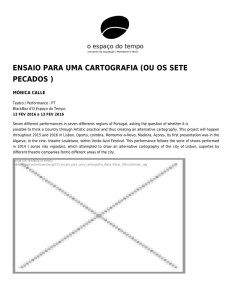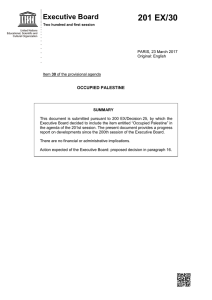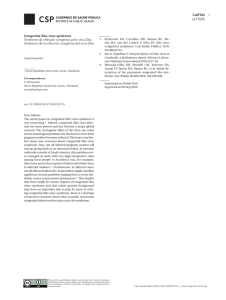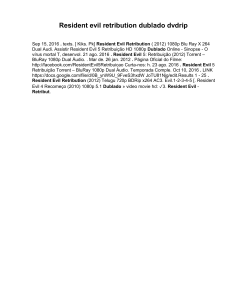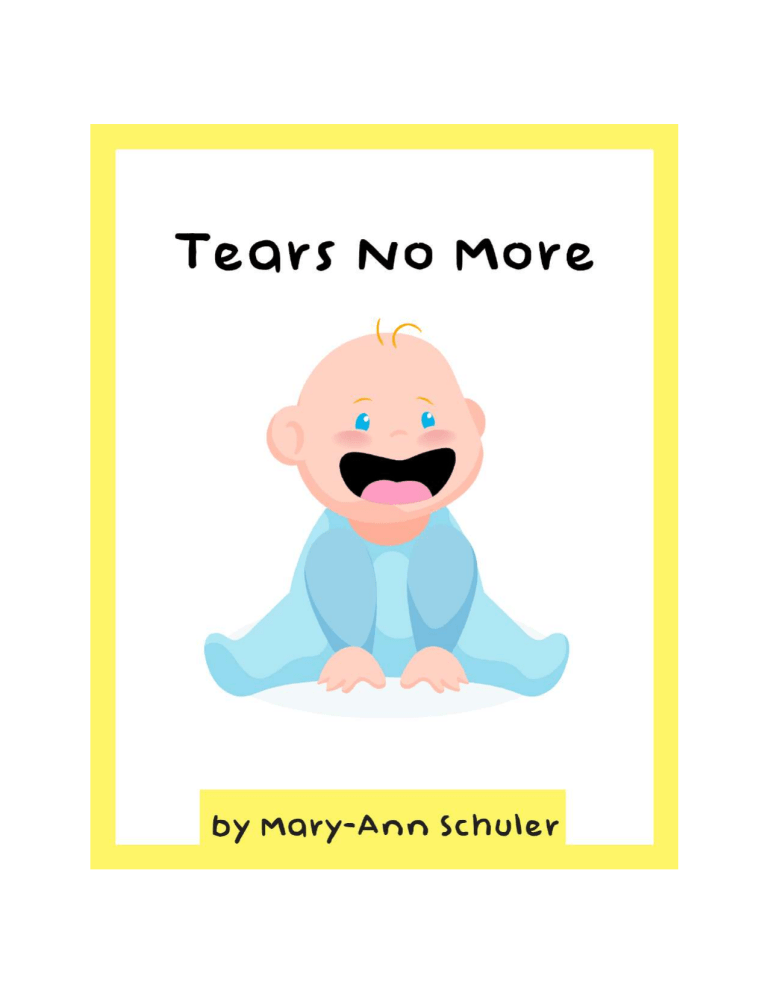
COPYRIGHT AND TRADEMARK NOTICES
This eBook is Copyright © 2016 Mary-Ann Schuler (the “Author”). All Rights Reserved. Published in the United States
of America. The legal notices, disclosures, and disclaimers at the front of this eBook are Copyright © 2009 Law Office
of Michael E. Young PLLC, and licensed for use by the Author. All rights reserved.
No part of this eBook may be reproduced or transmitted in any form or by any means, electronic or mechanical,
including photocopying, recording, or by an information storage and retrieval system -- except by a reviewer who may
quote brief passages in a review to be printed in a magazine, newspaper, blog, or website -- without permission in
writing from the Author. For information, please contact the Author by e-mail at [email protected] or
by mail at 2972 Columbia St., 7144 Torrance, CA 90503.
All trademarks and service marks are the properties of their respective owners. All references to these properties are
made solely for editorial purposes. Except for marks actually owned by the Author, the Author (as both author and as
publisher) does not make any commercial claims to their use, and is not affiliated with them in any way.
Unless otherwise expressly noted, none of the individuals or business entities mentioned herein have endorsed the
contents of this eBook.
LIMITS OF LIABILITY & DISCLAIMERS OF WARRANTIES
This eBook is a general educational information product.
As an express condition to reading to this eBook, you understand and agree to the following terms.
The eBook’s content is not a substitute for direct, personal, professional health or psychological diagnosis. None of
the exercises or treatments (including products and services) mentioned in this eBook should be performed or
otherwise used without clearance from your pediatrician.
There may be risks associated with participating in activities or using products mentioned in this eBook for babies in
poor health or with pre-existing physical or mental health conditions.
Because these risks exist, you will not use this product with your baby or have him participate in such activities if he
is in poor health or have a pre-existing mental or physical condition. If you choose to let him participate in these risks,
you do so of your own free will and accord, knowingly and voluntarily assuming all risks associated with such activities.
The materials in this eBook are provided "as is" and without warranties of any kind either express or implied. The
Author disclaims all warranties, express or implied, including, but not limited to, implied warranties of merchantability
and fitness for a particular purpose. The Author does not warrant that defects will be corrected, or that that the site
or the server that makes this eBook available are free of viruses or other harmful components. The Author does not
warrant or make any representations regarding the use or the results of the use of the materials in this eBook in terms
of their correctness, accuracy, reliability, or otherwise. Applicable law may not allow the exclusion of implied
warranties, so the above exclusion may not apply to you.
Under no circumstances, including, but not limited to, negligence, shall the Author be liable for any special or
consequential damages that result from the use of, or the inability to use this eBook, even if the Author or his
authorized representative has been advised of the possibility of such damages.
Applicable law may not allow the limitation or exclusion of liability or incidental or consequential damages, so the
above limitation or exclusion may not apply to you. In no event shall the Author's total liability to you for all damages,
losses, and causes of action (whether in contract, tort, including but not limited to, negligence or otherwise) exceed
the amount paid by you, if any, for this eBook.
© 2016 Mary-Ann Schuler – WWW.BABYSLEEPMIRACLE.COM
1
You agree to hold the Author of this eBook, the Author’s owners, agents, affiliates, and employees harmless from any
and all liability for all claims for damages due to injuries, including attorney fees and costs, incurred by you or caused
to third parties by you, arising out of the products, services, and activities discussed in this eBook, excepting only
claims for gross negligence or intentional tort.
You agree that any and all claims for gross negligence or intentional tort shall be settled solely by confidential binding
arbitration per the American Arbitration Association’s commercial arbitration rules. All arbitration must occur in the
municipality where the Author’s principal place of business is located. Arbitration fees and costs shall be split equally,
and you are solely responsible for your own lawyer fees.
Facts and information are believed to be accurate at the time they were placed in this eBook. All data provided in this
eBook is to be used for information purposes only. The information contained within is not intended to provide specific
health advice, or any other advice whatsoever, for any individual or company and should not be relied upon in that
regard. The services described are only offered in jurisdictions where they may be legally offered. Information
provided is not all-inclusive, and is limited to information that is made available and such information should not be
relied upon as all-inclusive or accurate.
For more information about this policy, please contact the Author at the e-mail address listed in the Copyright Notice
for this eBook.
IF YOU DO NOT AGREE WITH THESE TERMS AND EXPRESS CONDITIONS, DO NOT READ THIS EBOOK. YOUR USE OF THIS
EBOOK, PRODUCTS, SERVICES, AND ANY PARTICIPATION IN ACTIVITIES MENTIONED ON THIS EBOOK, MEAN THAT YOU
ARE AGREEING TO BE LEGALLY BOUND BY THESE TERMS.
AFFILIATE COMPENSATION DISCLOSURE
This eBook contains hyperlinks to websites and information created and maintained by other individuals and
organizations. The Author does not control or guarantee the accuracy, completeness, relevance, or timeliness of any
information or privacy policies posted on these linked websites.
You should assume that all references to products and services in this eBook are made because material connections
exist between the Author and the providers of the mentioned products and services (“Provider”). You should also
assume that all hyperlinks within this book are affiliate links for either (a) the Author or (b) someone else who is an
affiliate for the mentioned products and services (individually and collectively, the “Affiliate”).
The Affiliate recommends products and services in this eBook based in part on a good faith belief that the purchase
of such products or services will help readers in general. The Affiliate has this good faith belief because (a) the Affiliate
has tried the product or service mentioned prior to recommending it or (b) the Affiliate has researched the reputation
of the Provider and has made the decision to recommend the Provider’s products or services based on the Provider’s
history of providing these or other products or services. The representations made by the Affiliate about products and
services reflect the Affiliate‘s honest opinion based upon the facts known to the Affiliate at the time this eBook was
distributed by the Affiliate.
Because there is a material connection between the Affiliate and Providers of products or services mentioned in this
eBook, you should always assume that the Affiliate may be biased because of the Affiliate’s relationship with a Provider
and/or because the Affiliate has received or will receive something of value from a Provider.
Perform your own due diligence before purchasing a product or service mentioned in this eBook.
The type of compensation received by the Affiliate may vary. In some instances, the Affiliate may receive
complimentary products, services, or money from a Provider prior to mentioning the Provider’s products or services
in this eBook.
© 2016 Mary-Ann Schuler – WWW.BABYSLEEPMIRACLE.COM
2
In addition, the Affiliate may receive a monetary commission or non-monetary compensation when you take action
by clicking on a hyperlink in this eBook. This includes, but is not limited to, when you purchase a product or service
from a Provider after clicking on an affiliate link in this eBook.
YOU SHOULD ALWAYS CONDUCT YOUR OWN INVESTIGATION (PERFORM DUE DILIGENCE) BEFORE BUYING PRODUCTS
OR SERVICES FROM ANYONE VIA THE INTERNET. THIS INCLUDES PRODUCTS AND SERVICES SOLD VIA HYPERLINKS
EMBEDDED IN THIS EBOOK.
© 2016 Mary-Ann Schuler – WWW.BABYSLEEPMIRACLE.COM
3
TABLE OF CONTENTS
COPYRIGHT AND TRADEMARK NOTICES ................................................................................................................ 1
LIMITS OF LIABILITY & DISCLAIMERS OF WARRANTY ............................................................................................. 1
AFFILIATE COMPENSATION DISCLOSURE ............................................................................................................... 2
INTRODUCTION ..................................................................................................................................................... 5
WHY ARE CHILDREN IRRITABLE .............................................................................................................................. 7
WHAT MAKES YOUR CHILD IRRITABLE ................................................................................................................. 10
HOW DOES A CHILD BECOME CALM .................................................................................................................... 13
GUIDELINES TO MAKE YOUR CHILD BECOME A HAPPIER CHILD ........................................................................... 19
REFERENCES & RESOURCES .................................................................................................................................. 25
© 2016 Mary-Ann Schuler – WWW.BABYSLEEPMIRACLE.COM
4
INTRODUCTION
One of the most disturbing psychological challenges of parenthood is a child
who is chronically irritable, angry, and who explodes into temper tantrums.
In fact, anger and irritability are among the most common reason parents
consult health professionals.
Irritability can have a damaging effect on the child’s development, the parentchild relationship, and family life.
What’s worse, parents become desperate in their attempts to calm their child.
And when nothing works, parents often feel useless and worry why their child
appears unhappy most of the time. For the child, it is an unsettling experience
© 2016 Mary-Ann Schuler – WWW.BABYSLEEPMIRACLE.COM
5
to be chronically unregulated when things like transitions to a new activity,
getting dressed, or being bathed trigger a tantrum.
Usually such children learn to depend on their parents to soothe them because
they lack strategies for self-calming.
And because they are irritable most of the time, they may not experience
pleasurable interactions with others.
There are many reasons a child is irritable or has problems regulating his or her
mood. It is helpful for parents to understand what might be setting off the
irritability, as well as learn ways to help their child learn to stay calm when
frustrated or distressed.
This short guide will help you achieve exactly that by showing you an easy-toread, easy-to-follow method to help calm your baby in a family-oriented mix
of guidance, support, and efficient techniques.
© 2016 Mary-Ann Schuler – WWW.BABYSLEEPMIRACLE.COM
6
WHY ARE CHILDREN IRRITABLE
There are several reasons why children are irritable.
Sometimes there are medical problems like chronic ear infections, severe
allergies, or urinary tract infections that may make your child uncomfortable
and experience pain.
A common problem frequently overlooked is intolerance to milk. Children who
rely on a diet heavy in gluten (wheat products) or sugar products can
experience frequent mood swings and become picky eaters.
Some children are born fussy and have a difficult temperament. Children with
a difficult temperament are usually more intense, have a hard time tolerating
change, and distress easily.
It may be hard for them to keep a happy mood for very long. In addition, these
children tend to be less flexible when changes of any sort are introduced.
© 2016 Mary-Ann Schuler – WWW.BABYSLEEPMIRACLE.COM
7
As a result, they often get angry, whishing that things be done exactly how they
want them to be.
Perhaps the most common reason children are irritable is because they
become easily overstimulated in response to sensory stimulation.
Basic experiences like face washing, dressing, noise on the playground, or a
busy household can load their nervous system and create an internal state that
can be overwhelming to the child and which can ultimately lead to meltdowns.
An inflexible child is often an irritable child.
Children who have problems with organization and planning often fall apart
when they are required to come up with a new way of doing things.
In addition to getting overstimulated easily, these irritable children often get
angry when they have to organize themselves to perform a complex task.
This problem is commonly associated with attention deficit disorder, executive
functioning problems, as well as motor planning issues.
Finally, it is important to determine whether your child has a mood regulation
problem that makes it difficult for him to keep a content mood.
Many parents worry about what this could mean for their child as he grows
older. The truth is, it’s very difficult to diagnose a mood disorder in very young
children, but irritability is a factor in disorders such as anxiety or depression.
As your child grows older, you may notice other things that point out to the
© 2016 Mary-Ann Schuler – WWW.BABYSLEEPMIRACLE.COM
8
fact that there is an underlying mood problem that goes beyond a fussy,
irritable temperament.
When the mood problems are unresponsive to typical solutions presented in
this guide, a consultation with a developmental or behavioral pediatrician or a
child psychologist is important.
However, an important aspect for parents to keep in mind is that what the
child needs most is to learn how to self-calm on his or her own and to tolerate
distress and frustration. This is a major focus of the strategy in this guide.
© 2016 Mary-Ann Schuler – WWW.BABYSLEEPMIRACLE.COM
9
WHAT MAKES YOUR CHILD IRRITABLE
It is important not to overlook the impact that the parents’ moods have on a
child – it is not unusual for children with mood problems to have parents who
also struggle with their mood.
There is also the genetic component. You may have a grandparent who had
been diagnosed with anxiety, an uncle with depression, or you yourself
struggled with a mood disorder your entire life.
If this is the case, it becomes even more important to consult with a mental
health professional to understand if your child may have a mood disorder that
makes him or her irritable.
When children are exposed to a parent who is angry, irritable, or depressed
most of the time, they learn to respond to these strong emotions.
© 2016 Mary-Ann Schuler – WWW.BABYSLEEPMIRACLE.COM
10
So even if your child doesn’t have a mood disorder, he can learn that this is
how one behaves.
The important thing is for you as a parent is to take care of yourself and find
ways to self-calm and be available anytime for the difficult task of parenting.
Common Irritability Causes
Can’t fall and stay
Overstimulated by
asleep
sensory stimulation
Poor organization
Overwhelmed by
skills
limits and change
Distresses easily
Allergies, medical
Reflux, eating
problems
problems
Inflexibility and
Home life
Parent(s) angry or
inability to adapt
disorganized
depressed
Sometimes, parents find that they are constantly walking on eggshells around
their irritable child. They may be afraid to set a limit or impose a change of
activity because they know their child is likely to explode into a long tantrum.
Some parents structure every minute of the child’s day to keep them
organized. But this technique can be double-edged.
By overstimulating the child or giving him one activity after the next in order
to distract him can backfire, and cause the child to become flooded with too
much stimulation, ultimately leading to an never-ending cycle of tantrums.
In scientific studies of irritable children with regulatory problems, experts
found that irritable children express themselves through distress signals.
They may scream, kick, push, bite, and yell to let you know how they feel.
© 2016 Mary-Ann Schuler – WWW.BABYSLEEPMIRACLE.COM
11
There may be very little calm discussion about things, or happy activity that
fills their time. This state of chaos and intensity causes the parent-child
interaction to become disrupted and thus everything becomes negative.
Sometimes, parents withdraw or disengage to avoid negative interactions with
their child. Moreover, they may let their child play alone when they are happy
and miss the best time to interact with them.
© 2016 Mary-Ann Schuler – WWW.BABYSLEEPMIRACLE.COM
12
HOW DOES A CHILD BECOME CALM
Every child has to learn how to handle his or her own distress.
Initially the parents calm the child.
As they read their child’s cues and see what works, they come up with a set of
soothing strategies that work for their child.
The child begins to mentally process these strategies and gradually takes over
the task of self-calming.
The process of becoming a well-regulated person depends on certain skills.
The child also needs models in the environment for how to become a good
self-calmer.
Here are some methods that help a child become well-regulated:
© 2016 Mary-Ann Schuler – WWW.BABYSLEEPMIRACLE.COM
13
When babies cry, it helps them to have a responsive, caring, and sensitive
parent who helps them calm down. This gives the child the message that their
basic needs can be met and there are ways to handle distress. This step
requires that parent(s) know how to read their child’s signals and gestures, as
well as have a host of calming strategies at their fingertips.
As a child matures, he learns to internalize strategies to self-calm. Consistent
use of good calming strategies helps the child lean which ones to call upon in
different situations. The child also observes others solve similar problems and
learns when and where to use which strategies.
Calming strategies and environmental modifications are most useful when one
anticipates what could go wrong and have things in place for that moment
when the child needs them.
This leads to the importance of teaching the child to understand the precursors
of irritability, to anticipate the onset of frustration and distress, and to use
appropriate strategies that are available.
Self-calming depends on the ability to problem solve before, during, and after
a distressing episode.
The child gradually learns a variety of ways to help himself organize and
monitor his own actions and to tolerate various negative emotions.
© 2016 Mary-Ann Schuler – WWW.BABYSLEEPMIRACLE.COM
14
To help your child become a thinking child, it is useful to help him or her step
out of the negative emotions and be thoughtful about the sequence of events
that occurred. Many parents say things like “I’ve told him a thousand times
that when he falls apart, he needs to go to his bedroom and calm down, but
he never listens. If I pick him up and put him there, he screams even more”.
The problem is that once the child reaches a distressed state, he may
completely shut off his thinking brain and cannot follow the strategy that his
parents are trying to teach him.
This is why it’s important to break the strategy down into steps so that the
child learns a successful approximation of what may work.
For instance, instead of expecting the child to go directly to the bedroom, the
parent may guide the child to go to a corner of the room and hug his body
tightly while humming a calm-down song.
© 2016 Mary-Ann Schuler – WWW.BABYSLEEPMIRACLE.COM
15
The idea behind this is to teach your child how to stop and think in the
moment, then slowly move towards anticipating what could go wrong,
remembering the strategy, and using it.
It isn’t until children have the capacity to remember past events and reflect on
what has happened that they are able to internalize and use strategies that
might work.
This is when the child develops insight into his behavior.
Self-calming requires the child to decrease the state of arousal he experiences
related to distress.
An adaptable child learns to recognize the internal state of distress and
hyperarousal, then finds ways to inhibit the arousal through strategies such as
closing his eyes.
A toddler may hold his hands together or put them in his pockets when told
not to touch a fragile object, thus inhibiting himself in an adaptable way.
An adult struggling to master a very difficult task may take a break to refresh
himself mentally and physically, thus avoiding an adult-sized tantrum.
Self-regulation develops through synchronized, reciprocal, and wellmodulated interactions between parents and their children.
© 2016 Mary-Ann Schuler – WWW.BABYSLEEPMIRACLE.COM
16
A task of the young infant is to be able to tolerate the intensity of arousal they
feel while interacting with their mom or dad. An infant who is flooded with too
much arousal during interactions will avoid them and shut down.
For a child to experience pleasure from playing or interacting with his
parent(s), he needs to find ways to avoid becoming over-stimulated.
The child has to find an optimal level of internal arousal to remain engaged in
the interaction.
Consequently, the parent acts to help regulate the child’s arousal by timing her
responses, laughing at the right moment, touching her child periodically,
encouraging him, and other behaviors that engage the child.
If you’re too active, though, and doing more than what your child can process,
the child will respond by backing away or becoming distressed.
Research has shown that when the parent and child are out-of-sync, the child
learns to withdraw from the overly arousing interaction.
This can lead to disengagement, with resulting insecurity in attachments.
So how do you find the most optimal level of stimulation when you interact
with your child?
The first thing you need to keep in mind is that the optimal level varies greatly
from one child to the next and depends upon the child’s threshold for arousal,
tolerance for stimulation, and ability to self-control arousal.
© 2016 Mary-Ann Schuler – WWW.BABYSLEEPMIRACLE.COM
17
The best way to know if you’re on the right track is to watch your child’s
response. If you are offering an optimal level of stimulation, smiling occurs.
An increase in your child’s attentiveness will usually relate to you becoming
less active and more attentive to what your child is doing. Pay attention to
what your child is seeking and needing from you. If you are too active and
directive of your child, he is likely to become less focused and attentive.
Here are the skills needed for your child to become an effective self-calmer:
Provide a model of what it looks and feels like to be calm.
Validate your child’s level of distress. Respond to him gently through
gestures and words.
Show your child how to calm down in many different situations.
Expand your child’s repertoire of self-calming strategies so that when
one fails, another one might work.
Help your child find activities that give him pleasure so that he can shift
from a distressed feeling to a positive one.
Once your child is calm, help him think through what caused his distress
and what he can do to make himself feel better next time it happens.
While he is distressed, help your child to decrease that feeling. Use
calming strategies that involve his cognitive abilities.
Help your child think of what the next step might be and remain focused
on accomplishing that goal.
© 2016 Mary-Ann Schuler – WWW.BABYSLEEPMIRACLE.COM
18
GUIDELINES TO MAKE YOUR CHILD BECOME A HAPPIER CHILD
Before embarking on a program to address your child’s irritability, it is useful
to think about when and where crying and irritability occur, and for how long,
to determine the causes of the behavior.
In some cases, a crying infant or irritable child may be responding to tensions
that you are feeling which may cause you to handle your child briskly or to snap
at them when they ask for something.
All parents have bad days, but if this is a normal course of events for you, then
what is irritability may occur whenever changes are introduced in the everyday
routine or activity.
Once it is more apparent what might be underlying the child’s irritability,
treatment ideas can be tried.
© 2016 Mary-Ann Schuler – WWW.BABYSLEEPMIRACLE.COM
19
It is very hard to help intensely unregulated children to calm down.
Sometimes parents say that once the tantrum begins, it has to run its course
and may take several hours before things get better.
An important aspect in helping your child is to develop a consistent plan in
approaching different behaviors.
The key principle to keep in mind is that we need to teach your child to calm
himself down, to become a better problem solver, and to tolerate distress
when he can’t change a frustrating situation.
As parents we need to keep calm, understand our own limits, and make a plan
that will work. At the same time, it is essential for you to understand your
child’s distress and feelings while learning how to set limits and redirect your
child to purposeful activity.
Below are listed a number of guidelines that can be used in helping your child
become a happier child:
© 2016 Mary-Ann Schuler – WWW.BABYSLEEPMIRACLE.COM
20
Rule Out Medical Problems
When an infant or child is inconsolable, it is important to determine if the child
has any medical problem that may be the primary reason for the crying or
chronic irritability.
Address Irritability-Generating Sensory Hypersensitivities
Inconsolability may be related to hypersensitivities that the child has to
environmental stimulation. These hypersensitivities may include clothes that
agitates the child, noises that overstimulate him, or too many activities in a
room that create an overloading effect.
The child’s sensory hypersensitivities should be addressed whenever possible
through play. If your child is hypersensitive to sounds, he should be
encouraged to engage in activities that allow him to make sounds.
In addition, movement activities are very calming, particularly ones that
provide linear movement like glider chairs and trampolines.
Avoid Overstimulating Your Child
A common problem confronting the parent who is trying to console a crying
child is a tendency to become frantic when their efforts do not seem to work.
© 2016 Mary-Ann Schuler – WWW.BABYSLEEPMIRACLE.COM
21
You may find yourself rocking your child in a forward and back motion for a
few minutes, then swinging your child in the air when the crying resumes.
Or if your child is older, you may hand him a book to look at, music to listen to,
or convince him to go outside for a change of scenery.
When each of your ideas fail to work, you find yourself scanning the list in your
mind to offer something else that might work.
Whatever you do, it’s a good idea to step back and think how many things did
you just do to help your child calm down? If you count more than three, and
all in a short period of time, it probably is too many.
The important thing is to try one thing long enough to see if it works.
One trick is to watch to see if there are certain situations or demands that
consistently overwhelm your child.
For example, some children are overwhelmed by noisy, crowded
environments. In this case, the issue is more sensory based.
This kind of child needs to have smaller amounts of stimulation in his life.
In this regard, it is helpful to teach your child to find healthy escapes when he
is overwhelmed.
Other children cannot stand to have limits place on them because of their
inflexibility in tolerating change or their need to control what happens to them.
© 2016 Mary-Ann Schuler – WWW.BABYSLEEPMIRACLE.COM
22
Once you figure out what might be contributing to the irritability, you might
be able to help your child by prompting him when a limit is on the horizon.
An easy way to do this is to use a behavioral chart with clear pictures or
symbols of upcoming events or tasks that need to be done.
It is very comforting for children to know what’s next on the agenda.
Help The Child Become More Self-Reliant
Many parents complain that their child is constantly whining and demanding
their attention.
To help build the child’s capacity to organize himself and decrease reliance on
the parent to entertain him, you should try playing with your child for about
10 to 15 minutes using the child’s favorite toys.
After the child is playing well, you should encourage him to keep playing while
you do a small chore or activity in the same room.
Every few minutes, you should check in, reassure, and praise him.
Whenever you are in involved in a task such as cooking a meal, it is wise to
offer your young child some pots and pans, plastic containers, and small
objects to use in filling, dumping, stirring, etc. so that your child can play and
imitate you while you cook. If your child complains, you should try to redirect
him physically or verbally. Moreover, you should be clear to your child about
© 2016 Mary-Ann Schuler – WWW.BABYSLEEPMIRACLE.COM
23
when it is time that you will pick them up or help them and when it isn’t
because you are busy.
As soon as you are finished with your chore, you should reward them for
playing alone or waiting by sitting with them to read a story or playing with
them briefly.
For young babies, they may be carried about in a sling while you do household
chores so that he or she can see what you are doing.
With older children – preschoolers and school-aged children – it is helpful to
teach your child to label his or her emotions and to read bodily signals so that
he or she can implement calm-down strategies on their own.
Sometimes children respond to ideas like a traffic light or mood meter with red
color denoting “time to put on the brakes” or mad or angry feelings and green
or blue colors for feeling calm or focused.
Other children respond well to thinking about their engine is running.
© 2016 Mary-Ann Schuler – WWW.BABYSLEEPMIRACLE.COM
24
REFERENCES & RESOURCES
The Baby Owner’s Manual: Operating Instructions, TroubleShooting Tips, And Advice On First-Year Maintenance – Louis
Borgenicht M.D., Joe Borgenicht; Quirk Books Publishing; 2012
What To Expect The First Year – Heidi Murkoff, Sharon Mazel; Workman Publishing
Company; 2014
Baby Knows Best: Raising A Confident And Resourceful Child, The RIE™ Way –
Deborah Carlisle Solomon; Little, Brown and Company Publishing; 2015
Permission To Parent: How To Raise Your Child With Love And Limits – Robin Berman;
Harper Wave Publishing; 2015
Brain Rules for Baby: How to Raise a Smart and Happy Child from Zero to Five – John
Medina; Pear Press Publishing; 2011
© 2016 Mary-Ann Schuler – WWW.BABYSLEEPMIRACLE.COM
25


